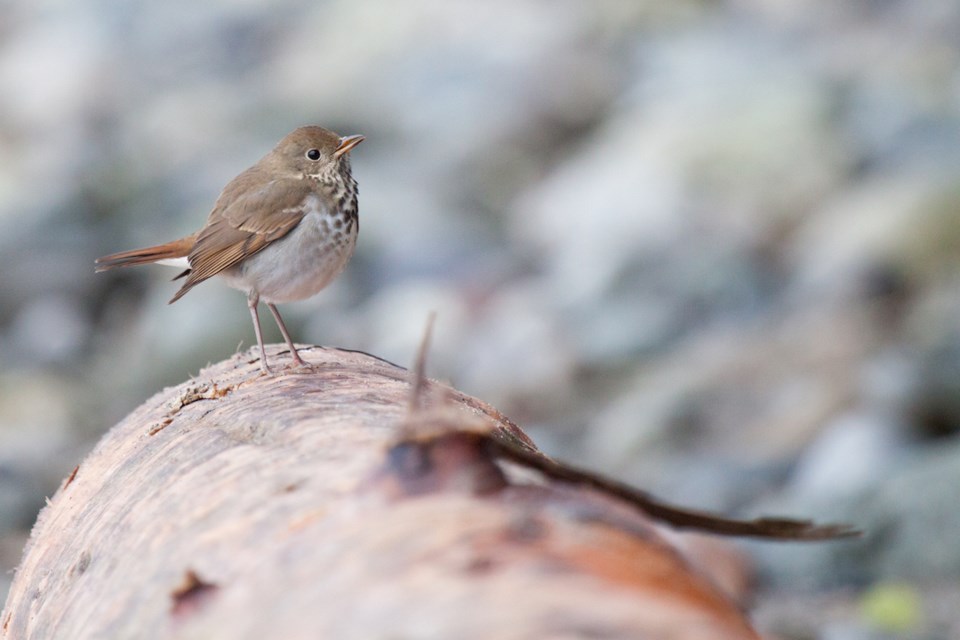The spring weather has been fitful this year, lacking any significant pulses of warm air from the south, with the temperature only flirting with 10 C most days. As I write this, I watch snowflakes the size of dinner plates descending from the sullen sky and landing among the whiteness of the blooming magnolia. Some local naturalists also observe and record butterflies, dragonflies, and all other elements of our natural history, including botany (visit the i-Naturalist website).
There were a number of reports on March 30/31 of the first butterflies of the year, the large brown and cream coloured mourning cloak, always one of the first butterflies to be sighted. The first cabbage white butterflies were reported on April 9. To date there have been no dragonfly sightings.
Bill Henwood of Halfmoon Bay declared April 10 as “thrush day” and there were numerous reports of our various thrush family species around this date. Not all thrushes have the word in their name, so species such as American robin, Townsend’s solitaire and mountain bluebird are all thrushes nevertheless.
Some of our thrushes are resident and some migratory. Varied thrushes are year-round residents of the Sunshine Coast, wintering in low to mid-elevation areas and moving up in to the hills to summer, largely above 900m elevation. These birds are still common in the forest around my house on Redrooffs Road, as I hear their subdued “chup” note, their flute-like song, and every morning there is evidence of their presence as they have kicked the leaf litter alongside the driveway onto the concrete to search for their invertebrate food items.
Bill (above) was referring to his sighting of both Townsend’s solitaire and hermit thush. Hermit thrushes winter on the Sunshine Coast in tiny numbers but there is a huge in-migration in April. The birds are seen at low elevations when they arrive but spend their summers in high elevation forests above about 900m. Unfortunately, they do not sing until they are on their breeding grounds and this is unfortunate as the pure, mournful, spine-tingling notes are my favourite B.C. birdsong. To hear it you need to be above 900m, at dawn, in May and June. See you there?
Townsend’s solitaire and mountain bluebird are both uncommon migrants through the Sunshine Coast and are seen in open areas in late March and April, as they are en route to their interior summering areas. They can appear in any open area but Gospel Rock has produced a number of sightings this spring.
The other two local thrushes are American robin, which is uncommon in the winter, but appears in massive numbers in spring, with reports of “hundreds” of birds in a single flock on suitable fields. Swainson’s thrush, very similar in appearance to hermit thrush, winters in the tropics and reappears to summer with us starting about May 12. Their song is “the sound of summer” on the Sunshine Coast.
To report your sightings or questions contact [email protected] or 885-5539. Good Birding.




